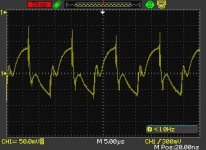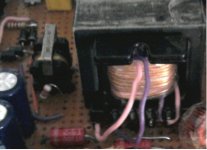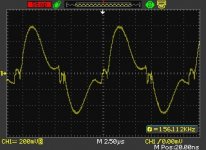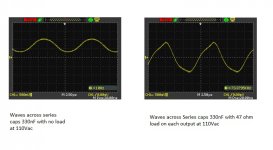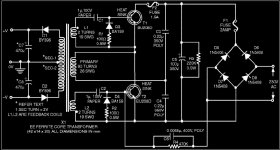EI-33 SMPS Working at mains and survived horrors!
Solved the GDT problem for those it might help: In case you have a GDT with an AL very close to 3000 solution is to combine two similar cores together tape + dip paint to get solid bond. Then wind the GDT. That applies as long as you are using toiroidal cores.
Now another thing with testing with lamps this can be very very very unstable unless the lamps are equalized with very high value resistors(Like the input caps in half bridge) i got the following situation:
Connected 2X100W bulbs in parallel on each output and around 1 metre wire to SMPS.
When testing on isolation transformer at 230V everything went fine each output was at 29V 350mA
When testing with 230Vac live and only 1X100W bulbs on each output all was ok even with meters connected.
When testing with 230Vac and 2x100W bulbs on each output the SMPS was buzzing irregularly(no meters at this point). I checked GDT waveforms, EI-33 primary everything showed normal waveforms. When i connected my ammeter those bulbs thing were pulling 9-10 AMPS! Ammeter was reversed connected and it was connected back to proper polarity guess what reading was fluctuating between 4-6 AMPS!
Added voltmeter on supply rail and everything came back to normal 30V 350mA. My guess is that the shunt resistor in the voltmeter was equalizing current somewhere in my circuit. I have removed the voltmeter and the same problem occured. I think lamps should be bypassed with say 470K - 1Meg resistors for testing since their resistance fluctutates so much with heat. I also found a loose ground connection which was also particiapting in the problem.
But otherwise the SMPS even survived those 10A bursts without burning mosfets but its not a miracle its thanks to the series caps which was properly sized and the overcurrent protection.
I'll post the final schematic soon. Yes !!! at last a working EI-33 SMPS at diy smps

it was time!
Next step is going back at lower voltage and implementing the SMPS bias startup scheme and completely remove those auxiliary transformers and power the SMPS Ic from the main EI-33 transformer like proper designs

